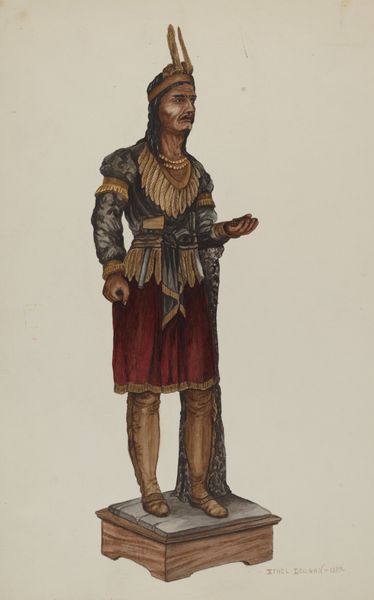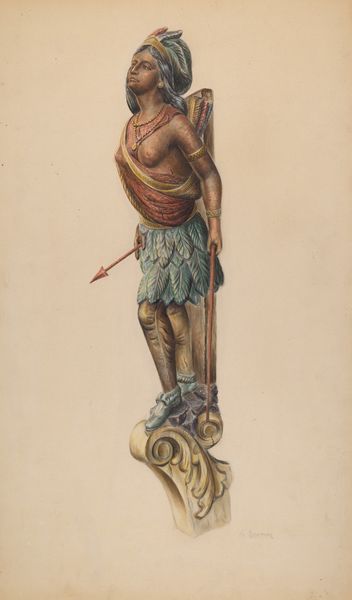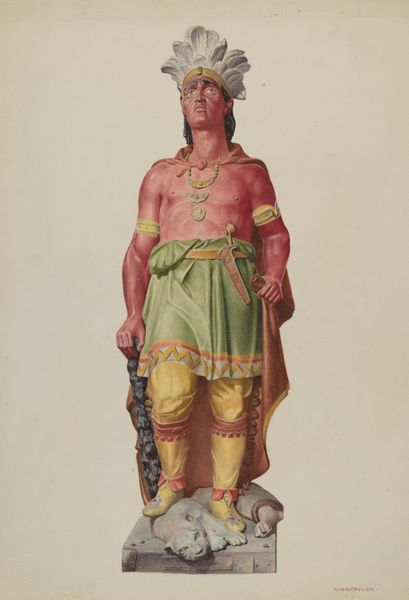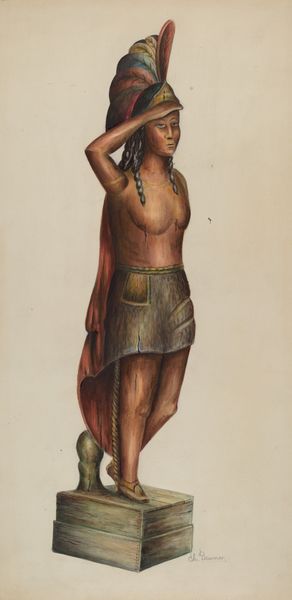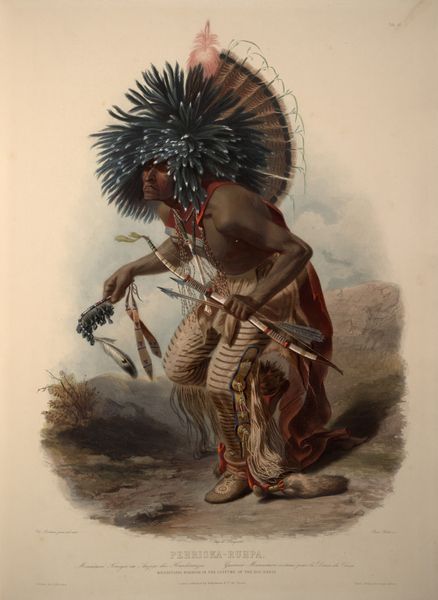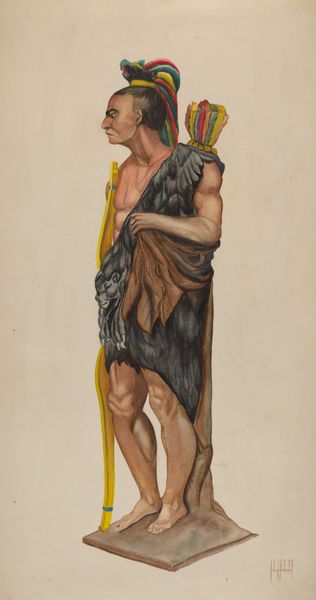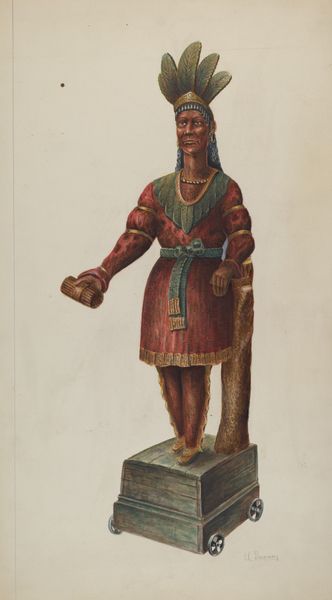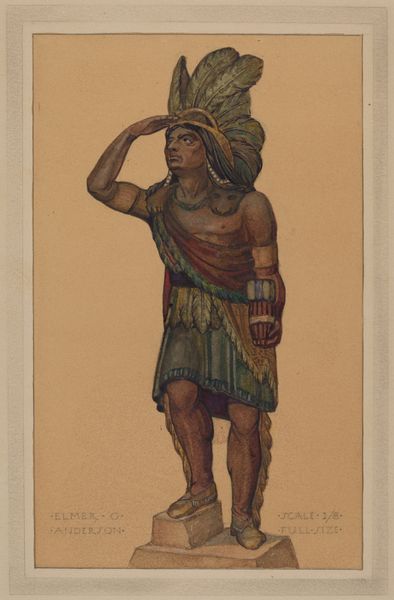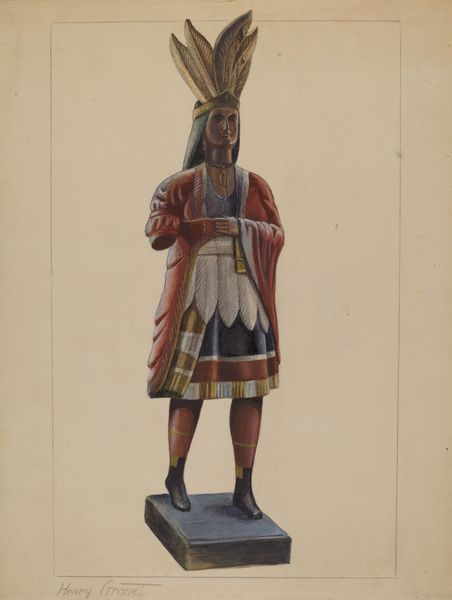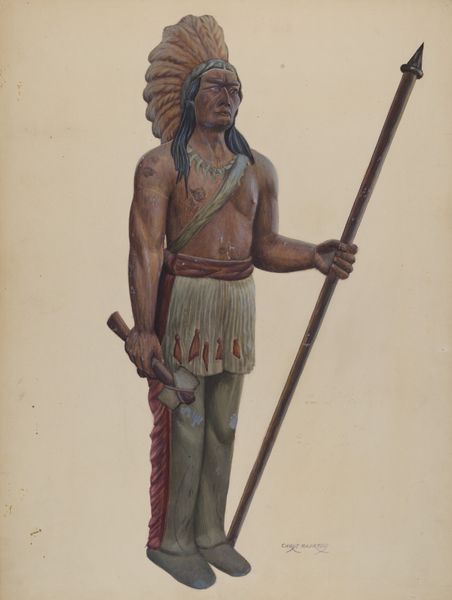
drawing
#
portrait
#
drawing
#
charcoal drawing
#
figuration
Dimensions: overall: 50.5 x 30.6 cm (19 7/8 x 12 1/16 in.)
Copyright: National Gallery of Art: CC0 1.0
Curator: At first glance, this watercolour and charcoal drawing of a carved figurehead feels somewhat...heroic, maybe even defiant, gazing upwards like that. Editor: We’re looking at a piece entitled "Figurehead: Indian," dating from 1935 to 1942, made from wood. It’s a representation of, ostensibly, an Indigenous person used as a decorative element, probably on the bow of a ship. This makes the method of carving central to its making, not so? What toolmarks remain? How was it affixed, or situated onboard? Curator: Precisely, because while on its own it appears as a portrait, the object's original placement reveals a network of manufacturing that implicates both skilled labor and the market value of decorative woodwork. Editor: And consider the symbolic weight it carried on a ship – both literally, acting as ballast and figuratively as a representation of a specific population during an era deeply entangled with colonialism and, here in America, federal Indian policy. Curator: What's also striking to me is the translation of wood carving, a highly tactile craft, into these much more visually immediate media. What kind of labor practices supported that move? Does that flatten its reception? Editor: I see your point. It also becomes detached from any direct association with Indigenous creation itself, further reinforcing its place within a specific power structure rather than honoring or accurately reflecting any authentic cultural representation. Museums especially bear this challenge when exhibiting an artwork originally intended as spectacle in a politicized, marine setting. Curator: Agreed. Understanding the whole journey here–from its possible manufacture to its place as cultural artifact allows us a better grasp on the forces that influenced its production, beyond just aesthetics. Editor: Indeed, seeing the art's intersection within political history requires critical insight, to recognize its implications even past its initial use on ship—as artwork today—by asking whose voices it reflects, whose labor it celebrates, and, just as important, whose histories remain submerged. Curator: This approach to the artwork truly helps highlight not just artistic skill, but the historical weight imbued in everyday, seemingly innocuous objects, making our perception more informed overall. Editor: A richer narrative for the viewer to embrace, to critically unpack.
Comments
No comments
Be the first to comment and join the conversation on the ultimate creative platform.
